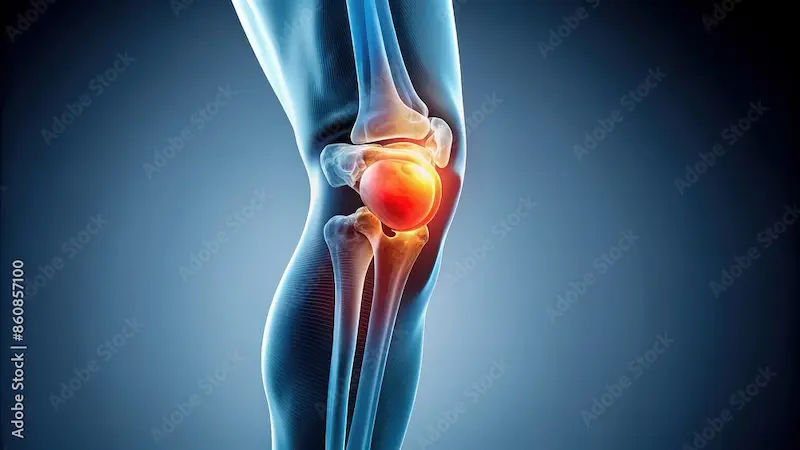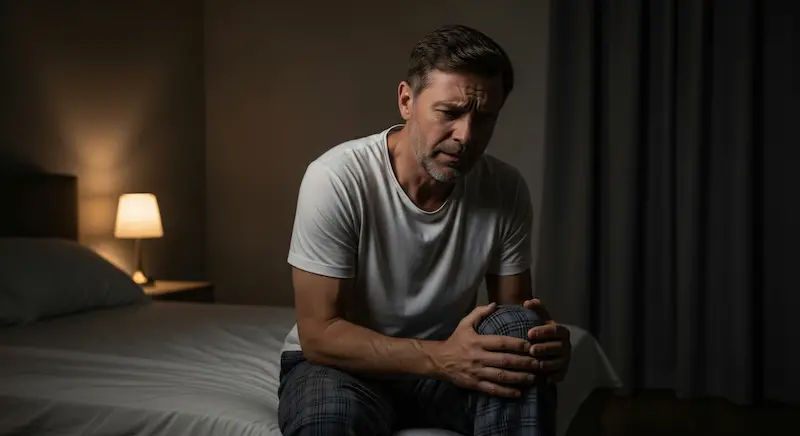Signs Of Never Ignoring These 5 Neurological Disorders And Diseases
Don't overlook critical neurological symptoms. Learn about the 5 common signs—like persistent pain, memory issues, and numbness—that could indicate a serious neurological disorder and when to seek medical help immediately.

Written by Dr. J T Hema Pratima
Reviewed by Dr. D Bhanu Prakash MBBS, AFIH, Advanced certificate in critical care medicine, Fellowship in critical care medicine
Last updated on 24th Oct, 2025

Introduction
Neurological disorder symptoms can appear suddenly and change a life in minutes. The challenge is knowing which signs are urgent—and acting fast. This guide spotlights five neurological disorder emergencies where early recognition and immediate action can save brain function, prevent disability, and, in some cases, save a life. We’ll walk through clear warning signs you should never ignore (from facial droop and slurred speech to seizure red flags and “worst-ever” headaches), what to do in the moment, and what to expect in the hospital. You’ll also learn how to tell a routine symptom from a dangerous one, along with practical first-aid steps and follow-up options, including online care.
Drawing from top medical sources, we explain stroke and TIA, new-onset seizures and status epilepticus, meningitis and encephalitis, Guillain-Barré syndrome, and brain tumors with raised intracranial pressure. If any of these red flags appear in you or a loved one, call your local emergency number immediately. For non-emergency concerns or ongoing management after hospital care, you can consult a doctor online with Apollo24|7 for further evaluation and support. Let’s make sure the next time a serious neurological symptom appears, you know exactly what to do.
1) Stroke and TIA: Act FAST for Brain-Saving Minutes
When blood flow to part of the brain is blocked (ischemic stroke) or a vessel ruptures (hemorrhagic stroke), brain cells begin to die within minutes. A transient ischemic attack (TIA) causes similar symptoms but resolves quickly; it’s a critical warning shot for a future stroke. The most reliable way to remember stroke signs is
FAST:
• Face: drooping or uneven smile
• Arm: weakness or numbness on one side
• Speech: slurred, unable to speak, or not making sense
• Time: call emergency services immediately; note “last known well” time
Beyond FAST, watch for sudden vision loss, severe imbalance, severe headache (especially with neck stiffness or vomiting), and sudden confusion (long-tail keyword: sudden weakness and facial droop signs). Every minute counts—clot-busting thrombolysis may be possible within about 4.5 hours of symptom onset, and mechanical thrombectomy can benefit some patients up to 24 hours from last known well, depending on imaging and specialist assessment. Rapid transport to a stroke-ready hospital is essential.
Unique insight: Create a household “stroke plan” just like a fire drill. Post the FAST mnemonic on the fridge, save emergency numbers, list medications and allergies, and practice saying “last known well” time. Families who prepare act faster and reduce delays.
What to do right now
• Call emergency services; do not drive yourself.
• Note the exact time symptoms started (or last time the person was normal).
• Do not give food, drink, or aspirin unless a clinician advises (hemorrhagic strokes can bleed more with aspirin).
• Bring medication lists and ID.
Who’s at higher risk?
• High blood pressure, diabetes, smoking, high cholesterol, atrial fibrillation, prior TIA/stroke, and age over 55 increase risk. If you’ve had a TIA or suspicious brief symptoms, book a follow-up with a neurologist; if symptoms recur or persist beyond minutes, seek emergency care.
If symptoms persist beyond two weeks after a minor event or if you need risk-factor optimization (blood pressure, diabetes, lipids), consult a doctor online with Apollo24|7. Apollo24|7 also offers convenient home collections for tests like fasting lipids and HbA1c for stroke risk control. Consult a Top General Physician
2) New-Onset Seizures and Status Epilepticus: When a Seizure Is an Emergency
A seizure is a sudden burst of abnormal electrical activity in the brain. New-onset seizures can be triggered by fever, infection, metabolic issues, head injury, alcohol withdrawal, or a new neurological disorder. About 1 in 10 people may have a seizure during their lifetime, and around 1 in 26 will develop epilepsy. Any seizure lasting longer than 5 minutes, repeated seizures without regaining consciousness, or a seizure after head trauma is a medical emergency (status epilepticus).
Red flags that need urgent help
• Seizure >5 minutes or repeated seizures (back-to-back)
• Difficulty breathing, blue lips, severe injury during the event
• First-ever seizure in an adult
• Seizure in pregnancy, or with fever and confusion
• Post-seizure confusion lasting unusually long
Seizure first aid you can do safely
• Protect the person from injury: clear the area, cushion the head.
• Turn them on their side if possible to keep the airway clear.
• Do not restrain or put anything in the mouth.
• Time the seizure; call emergency services if it surpasses 5 minutes or if another begins.
What to expect next
In the emergency department, clinicians may order blood tests, a CT scan if head injury or new focal deficits are suspected, and often an EEG to examine brain electrical activity. An MRI may be ordered to look for structural causes (long-tail keyword: EEG and MRI for seizures). Not everyone with a first seizure starts medication; the decision depends on the risk of recurrence and cause.
Unique insight:
Keep a “seizure diary” using your phone. Record duration, potential triggers (sleep loss, stress, alcohol), a video if safe, and recovery time. This real-world data often helps clinicians decide on diagnostics or anti-seizure medications. For non-emergency follow-up, consider an online neurology consult with Apollo24|7 to review results, triggers, and medication options.
3) Meningitis and Encephalitis: Headache with Fever and Confusion
Meningitis is inflammation of the membranes covering the brain and spinal cord; encephalitis involves inflammation of brain tissue itself. Bacterial meningitis is a medical emergency with a significant risk of death or disability if not treated promptly, while viral meningitis is often milder. Classic symptoms include severe headache, fever, neck stiffness, photophobia (light sensitivity), and nausea. Encephalitis often adds confusion, personality changes, seizures, or altered consciousness.
Beware of exceptions: not everyone has all the classic signs. Older adults and infants may present atypically—think confusion, poor feeding, or irritability rather than a dramatic stiff neck. Some bacterial infections (e.g., meningococcal) can cause a non-blanching rash with fever—call emergency services immediately.
Why urgent testing matters
In suspected bacterial meningitis or encephalitis, antibiotics or antivirals are started quickly, often before lumbar puncture results, because every hour matters for survival and reducing complications. A CT scan may precede a lumbar puncture if there are focal neurologic signs or concern about raised intracranial pressure. Early therapy saves lives and prevents hearing loss, seizures, and long-term cognitive problems (long-tail keyword: stiff neck, fever, headache, meningitis).
What to do right now
• Do not wait for a rash or severe neck stiffness if severe headache and high fever are present.
• If confusion, seizures, or a rapidly worsening state occur, call emergency services.
• Document recent travel, sick contacts, or animal exposures to share with clinicians.
4) Guillain-Barré Syndrome: Ascending Weakness You Shouldn’t Ignore
Guillain-Barré syndrome (GBS) is an immune-mediated attack on peripheral nerves, often starting days to weeks after a respiratory or gastrointestinal infection. The hallmark is “ascending” weakness—tingling in the feet, then leg weakness, spreading to the arms and sometimes the face and breathing muscles. Reflexes are often reduced or absent, and severe cases may require intensive care and mechanical ventilation.
Why early treatment matters
Timely therapy with intravenous immunoglobulin (IVIG) or plasma exchange shortens recovery time and reduces complications. The progression can be rapid over days, so do not wait to see if weakness “goes away.” While many patients recover, some have prolonged rehabilitation needs.
Red flags: seek emergency care if
• Weakness is spreading from legs upward over hours to days.
• You notice trouble climbing stairs, rising from a chair, or lifting arms overhead.
• There’s facial weakness (difficulty smiling, closing eyes) or trouble swallowing.
• Breathing feels shallow; speech sounds weak or nasal.
What to expect in the hospital
Doctors will assess strength, reflexes, and respiratory function (vital capacity). Tests may include nerve conduction studies/EMG and a lumbar puncture showing elevated cerebrospinal fluid protein with minimal cells (albuminocytologic dissociation), though early in the disease this classic finding may be absent. Physical therapy and occupational therapy begin early (long-tail keyword: ascending weakness tingling legs GBS).
5) Brain Tumors and Raised Intracranial Pressure: The Pattern Behind “Persistent Headaches”
Most headaches are not tumors. But certain patterns suggest raised intracranial pressure or a focal brain lesion. Red flags include persistent morning headaches with vomiting, headaches that wake you from sleep, progressive worsening over weeks, new-onset seizures, new neurologic deficits (weakness, speech difficulty, visual loss), personality changes, or headaches triggered by coughing/straining [5] (long-tail keyword: persistent morning headaches vomiting).
Distinguishing features
• Migraine vs mass effect: Migraine often has a history, triggers, and responds to usual treatments. Tumor-related headaches may steadily worsen, resist usual medications, and are associated with neurological deficits.
• Seizure in an adult with no prior history is a common first sign of a brain tumor.
• Progressive focal symptoms—like one-sided weakness, aphasia, or visual field loss—are serious red flags.
Imaging and referrals
MRI of the brain with contrast is the preferred study for suspected brain tumors; CT may be used urgently to exclude hemorrhage or significant mass effect. If a tumor is found, a multidisciplinary team (neurology, neurosurgery, oncology, radiation oncology) will discuss biopsy, surgery, radiation, or chemotherapy. Not all tumors are cancer; meningiomas, for instance, are often benign but can still cause pressure symptoms [5].
Consult a Top General Physician
Conclusion and Next Steps
Some neurological disorder symptoms are simply too important to ignore. Stroke and TIA demand immediate action, seizures longer than five minutes are emergencies, meningitis and encephalitis evolve rapidly and require urgent treatment, Guillain-Barré syndrome can advance from tingling to life-threatening weakness, and certain headache patterns point to brain tumors or raised pressure. For each, the first step is recognizing the sign; the second is acting without delay.
Save the FAST mnemonic, learn seizure first aid, and pay attention to how symptoms change over hours and days. Trust the tempo of illness—sudden or steadily worsening symptoms deserve urgent assessment. After the emergency, high-quality follow-up keeps you safer long-term. Optimize blood pressure, diabetes, and lipids; adhere to anti-seizure or preventive medications; and keep a simple symptom diary you can share at visits.
If your condition does not improve after initial care or you need guidance on next steps, consult a doctor online with Apollo 24|7 for further evaluation, medication management, or referrals. For risk-factor testing (lipids, HbA1c) or ongoing monitoring, Apollo 24|7 offers a convenient home collection so you can stay on top of your health. You can’t prevent every neurological emergency—but with preparation, rapid action, and smart follow-up, you can dramatically change the outcome.
sources.
Consult a Top General Physician

Dr. Harshendra Jaiswal
General Physician/ Internal Medicine Specialist
12 Years • MBBS , MD (General medicine)
Kolkata
108 DHANA DHANVANTARI Clinic, Kolkata
(25+ Patients)

Dr. Swagata Sircar
General Physician/ Internal Medicine Specialist
8 Years • MBBS, MD General Medicine
Kolkata
HealthYou Speciality Clinic & Diagnostics., Kolkata

Dr. Gunashree V L
General Physician/ Internal Medicine Specialist
3 Years • MBBS
Bengaluru
Apollo Clinic, JP nagar, Bengaluru

Dr. Zulkarnain
General Physician
2 Years • MBBS, PGDM, FFM
Bengaluru
PRESTIGE SHANTHINIKETAN - SOCIETY CLINIC, Bengaluru

Dr Syed Mateen Pasha
General Physician
2 Years • MBBS
Bengaluru
PRESTIGE SHANTHINIKETAN - SOCIETY CLINIC, Bengaluru
Consult a Top General Physician

Dr. Harshendra Jaiswal
General Physician/ Internal Medicine Specialist
12 Years • MBBS , MD (General medicine)
Kolkata
108 DHANA DHANVANTARI Clinic, Kolkata
(25+ Patients)

Dr. Swagata Sircar
General Physician/ Internal Medicine Specialist
8 Years • MBBS, MD General Medicine
Kolkata
HealthYou Speciality Clinic & Diagnostics., Kolkata

Dr. Gunashree V L
General Physician/ Internal Medicine Specialist
3 Years • MBBS
Bengaluru
Apollo Clinic, JP nagar, Bengaluru

Dr. Zulkarnain
General Physician
2 Years • MBBS, PGDM, FFM
Bengaluru
PRESTIGE SHANTHINIKETAN - SOCIETY CLINIC, Bengaluru

Dr Syed Mateen Pasha
General Physician
2 Years • MBBS
Bengaluru
PRESTIGE SHANTHINIKETAN - SOCIETY CLINIC, Bengaluru
More articles from General Medical Consultation
Frequently Asked Questions
1) What are the most common early signs of a neurological disorder I should not ignore?
Sudden one-sided weakness or facial droop, slurred speech, seizure lasting >5 minutes, severe headache with fever or neck stiffness, ascending weakness, and new persistent morning headaches with vomiting are key red flags. When in doubt, seek urgent care.
2) How can I tell if a headache is a neurological emergency or just a migraine?
Headaches that are “worst ever,” come with fever and stiff neck, cause confusion, occur with new neurologic deficits, or worsen steadily over weeks (especially with morning vomiting) are concerning. If your headaches change pattern significantly, consult a neurologist online with Apollo24|7.
3) Is a single, brief seizure always an emergency?
Any first seizure in an adult warrants urgent evaluation. A seizure >5 minutes, repeated seizures, injury, or breathing trouble are emergencies. Follow-up testing (EEG, MRI) helps determine risk and treatment.
4) I had a brief episode of slurred speech that went away. Could that be a TIA?
Yes. A transient ischemic attack can cause temporary symptoms and predicts a higher stroke risk. Even if it resolves, get an urgent evaluation. Risk-factor control (blood pressure, cholesterol, diabetes) is crucial.
5) What tests diagnose a neurological disorder in the ER?
Depending on symptoms: CT or MRI brain, blood tests, ECG, lumbar puncture (for suspected meningitis/encephalitis), EEG (for seizures), and nerve studies (for conditions like GBS). For follow-up labs (e.g., lipids, HbA1c), Apollo24|7 offers a convenient home collection.




